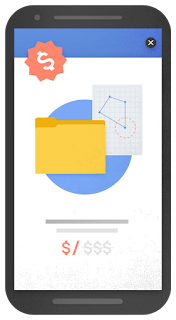2017 Year in Review: Digital Marketing
As we near the end of 2017, we recall many of the new ideas and innovations that this year brought to us. In digital marketing, there have been many changes. Digital marketing is centered around change, as it is required for this industry to live and thrive. Now we take a look at some of the biggest changes to digital marketing in 2017.
The Move to Mobile
This past year saw an incredible shift in user preference to mobile devices. It has grown to such a height that mobile search has now overtaken desktop search. The trend began early in 2017, but did not slow down at all. 33.3% of all transactions from Cyber Monday were completed on a mobile device. This mobile activity is up nearly 17% from the previous year.
It is also worth noting that age does not matter when it comes to mobile. Most people assume that the only demographic utilizing these mobile technologies are younger generations. In reality, older consumers are regularly active on digital devices. In fact, 50+ year old consumers had a 12% growth in smartphone usage over the past year. Read more in our article, “How to Reach Senior Citizens Using Digital Marketing”.
Competition Between Social Platforms
In 2017, each major social platform was vying for the spotlight. Twitter attempted to increase their numbers by doubling the character limit from 140 to 280. Sadly, this change did not produce the desired effect they were looking for, as their Q3 reports showed another decline in activity.
Snapchat focused on increasing advertising revenue. Their ‘Snap Pixel’ gives marketers better insight into consumer behaviors, which is certainly valuable when forming any kind of marketing strategy.
In the end, one social media platform came out on top in 2017. There can only be one winner, and this winner is Facebook. Facebook provides a larger audience, better targeting options, and superior results when it comes to digital marketing. Their resources and refined tools cannot be outdone. It is also very likely that their success will only continue to grow in the upcoming year.
The Importance of a Marketing Strategy
Digital marketing has become much more calculated. As the industry grows, experts are looking to make the most precise decisions when it comes to their digital marketing efforts. This means that anyone serious about digital marketing should be using a well thought out marketing strategy.
Long standing organizations have the benefit of possessing a history of data. This data is invaluable. Past behavior predicts future behavior. So, data can show you exactly what decisions to make, without much risk of failure.
However, if you do not have a large database to fall back on, it is best to begin with broad objectives which are then refined over time as you begin to notice what works and what does not. For more detailed information in creating a marketing strategy, please take a look at our article, “Create the Perfect Digital Marketing Strategy”.
Digital Permeation
As the digital industry continues to grow, it expands across many other industries. Digital marketing presents all businesses with the ability to better market their products and services. The main advantage is digital marketing’s low cost. Of course, digital marketing campaigns can become expensive if desired, but most campaigns produce results for mere pennies on the dollar.
This advantage has allowed digital marketing to infiltrate every area of business possible. There are no real limitations when it comes to digital marketing. Any organization looking to sell their product to a specified target audience can do it.
As a result, digital marketing strategies have been developed for entire industries. Food, healthcare, metal fabrication, you name it. All of these industries have been affected by digital marketing, and will continue to be affected in 2018.







